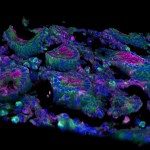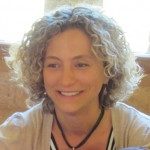Link to Pubmed [PMID] – 9639495
Blood 1998 Jul;92(1):25-31
The serine protease, thrombin, is both a potent agonist for platelet aggregation and a mitogen inducing the proliferation of other cell types. Many cellular responses to thrombin are mediated by a G-protein-coupled thrombin receptor (protease-activated receptor-1, PAR-1). This represents the prototype of a new family of proteolytically cleaved receptors that includes PAR-2 and the recently identified PAR-3. Like PAR-1, PAR-3 is a potential thrombin receptor. Their similar gene structure, mechanism of activation, and colocalization to 5q13 raises the question of a common evolutionary origin and of their belonging to a clustered gene family. Construction of a physical map of the 5q13 region by pulsed-field gel electrophoresis (PFGE) has allowed us to identify six potential CpG islands and to establish a linkage of the PAR genes. Southern blot analysis showed that they were in a cluster on a 560-kb Asc I fragment, in the order PAR-2, PAR-1, and PAR-3. PAR-1 and PAR-2 genes were contained within the identical 240-kb Not I fragment, thus confirming a tight linkage between them. The localization of other CpG islands suggested that more PAR-family genes may be present.

